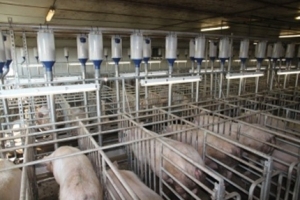African Swine Fever outbreaks: Bio-security emphasised

Recent outbreaks of African Swine Fever in Russia and other CIS countries once more indicate the importance of bio-security in the industry. Two basic rules can help avoid contamination, Belgian livestock equipment Roxell indicates.
The company sent out a press release pointing at the behaviour of several animal diseases, like African Swine Fever, spreading from farm to farm through all kinds of agents: wild birds, other animals, people, transportation vehicles, apparatus, etc.
“Farmers can do only one thing to protect their business: create an adequate barrier between their business and the outside world.
“Although it is impossible to prevent wild birds from flying over or landing on the farm grounds, a number of dispositions allow reducing risks of contamination to a real minimum. In practice, it comes down to two basic rules.”
Contact reduction
First rule the company mentions is one of contact through equipment.
“Feed trucks are regular visitors on a farm. In the concept of animal bio-security the site is protected by a secure fence. The storage bins are filled outside the fence. Feed is then transported through closed overhead systems to the house or the houses eventually using intermediate bins with a day’s capacity.
“In addition, visitor cars need to be kept outside the fenced area as they can be the carrier of different contaminations. Any person, even the farm personnel, is a potential danger. The solution here is to organise one main entrance to the site including a disinfection lock with a compulsory shower facility and to impose farm footwear and clothing. Roxell people who visit farms, even on an occasional basis, receive strict rules to which they have to comply.”
Human-pig contact
Direct contact plays an important role as well, the press release indicates.
“Limiting direct contact between humans and animals also reduces the risk of infections. The farm personnel must concentrate on control and management. Farms can be equipped with fully automated feeding and drinking systems. Modern technology allows complete control of the systems as well as the feeding schedules even to the level of individual feeding of sows (middle picture).
“The feed must remain inaccessible until feeding times to reduce possible contamination by rodents (see top picture). The feeder design should incorporate features to exclude feed wastage and allow pigs or sows to empty the feeder between meals (bottom picture).”
Related website:
• Roxell











